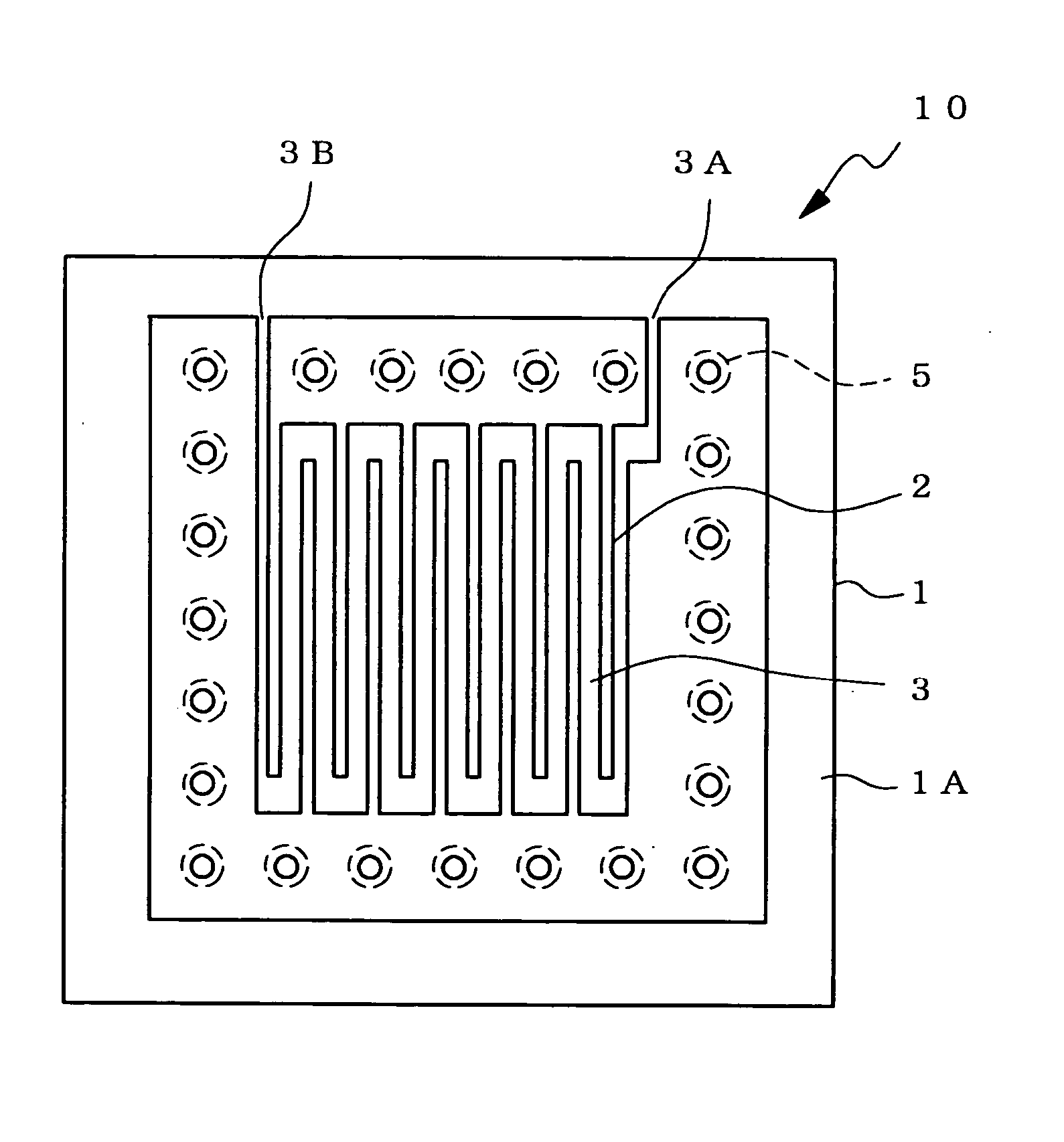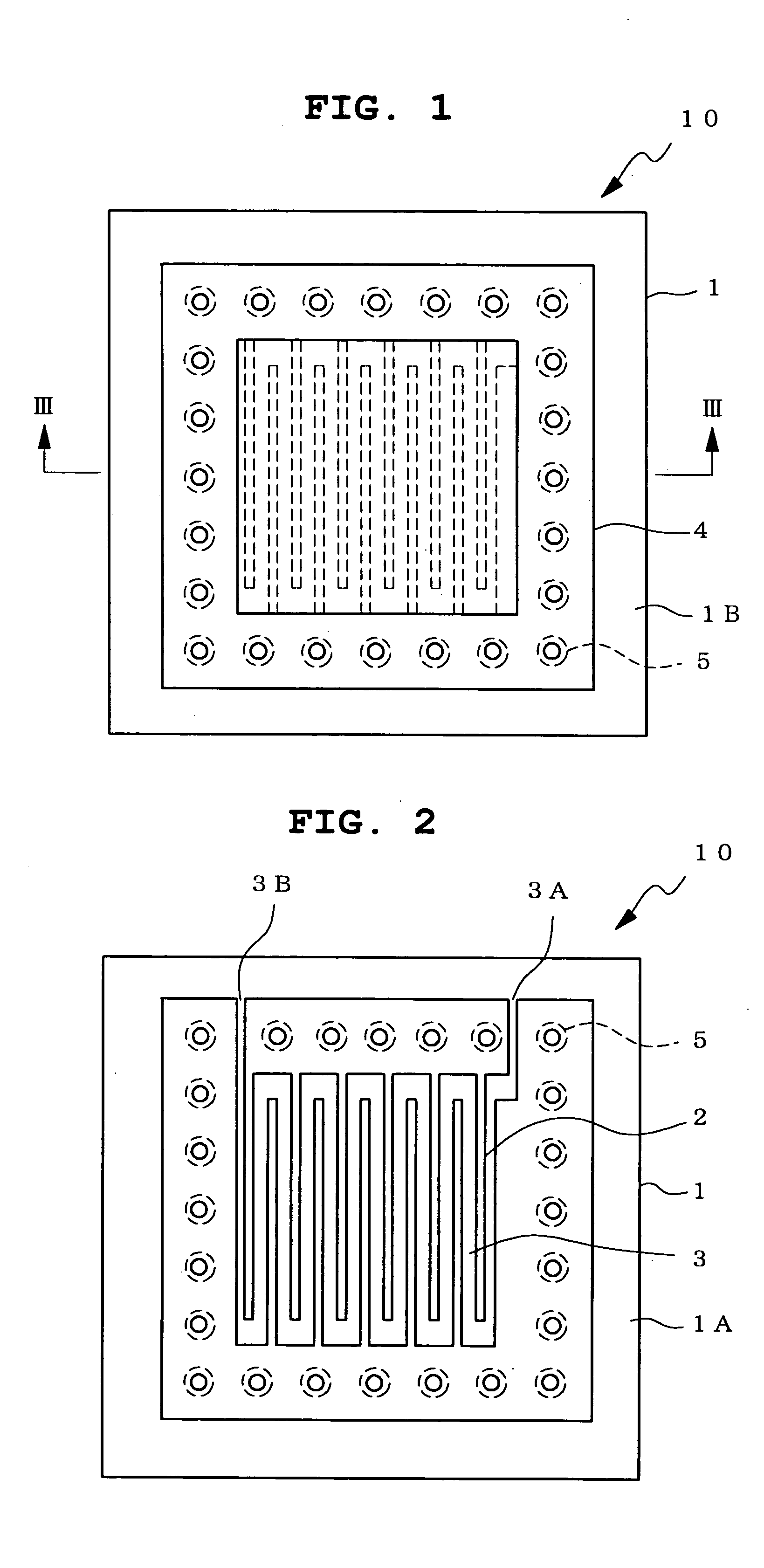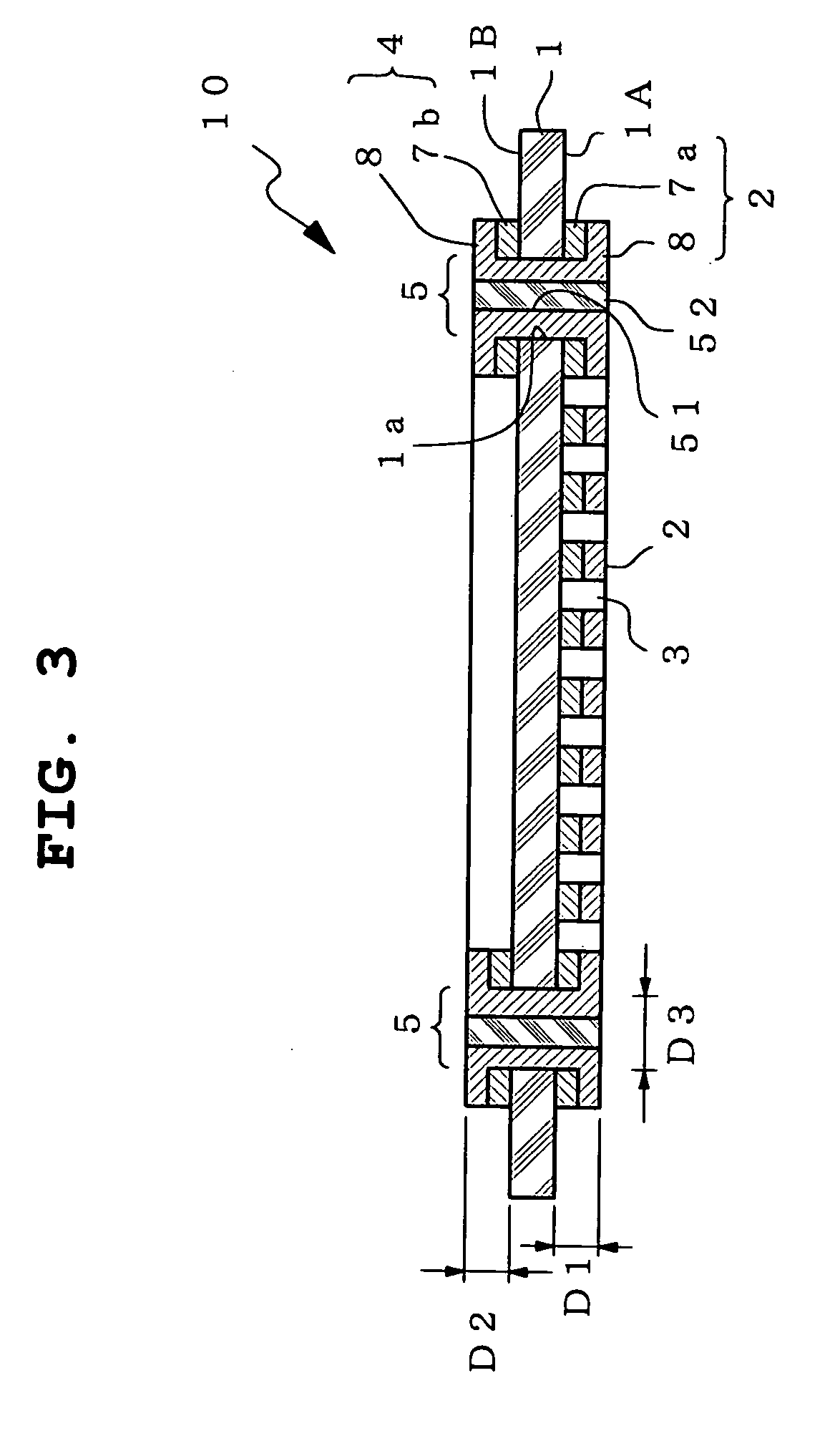Separator for fuel cell and fuel cell using the same
a fuel cell and separator technology, applied in the direction of cell components, electrochemical generators, cell component details, etc., can solve the problems of increasing the number of steps and the cost, difficult to make conventional separators thinner, and difficult to form thin fuel cells, so as to achieve convenient manufacturing and maintenance, maintain strength, and reduce the number of steps.
- Summary
- Abstract
- Description
- Claims
- Application Information
AI Technical Summary
Benefits of technology
Problems solved by technology
Method used
Image
Examples
example 1
(Preparation of Separator)
A laminate plate comprising copper layers each having a thickness of 0.018 mm laminated on both principal planes of a glass epoxy substrate having a thickness of 1.6 mm was prepared and holes having a diameter of 1 mm were formed with a drill at predetermined positions in the principal plane of the laminate plate. Then, copper plating was applied to the entire surfaces of the both surfaces of the laminate plate until the copper layer came to have a thickness of 0.2 mm. As a result, a via hole having a copper layer formed on the inner surface of the holes having a diameter of 1 mm was obtained. The copper layer on the inner surface of the holes having a diameter of 1 mm was linked to the copper layer laminated on the principal plane of the laminate plate. Then, a through-hole remaining inside the copper layer in the via hole was filled with a liquid epoxy resin (EPOX-AH333, Mitsui Chemical) and cured to seal the hole. A dry film resist (SPG-252, Asahi Kas...
example 2
(Preparation of Separator)
A laminate plate comprising copper layers each having a thickness of 0.018 mm laminated on both principal planes of a glass epoxy substrate having a thickness of 1.6 mm was prepared and holes having a diameter of 1 mm were formed with a drill at predetermined positions in the principal plane of the laminate plate. Then, copper plating was applied to the entire surfaces of the both surfaces of the laminate plate until the copper layer came to have a thickness of 0.03 mm. As a result, a via hole having a copper layer formed on the inner surface of the holes having a diameter of 1 mm was obtained. The copper layer on the inner surface of the holes having a diameter of 1 mm was linked to the copper layer laminated on the principal plane of the laminate plate. Then, a through-hole remaining inside the copper layer in the via hole was filled with a liquid epoxy resin (EPOX-AH333, Mitsui Chemical) and cured to seal the hole. The both principal planes of a glass...
example 3
(Preparation of Fuel Electrode and Oxygen Electrode)
A paste comprising a polymer electrolyte membrane (“Nafion”, DuPont) solution, a carbon powder and a platinum catalyst (Nafion:carbon powder:platinum catalyst=7:5:3 (weight ratio)) was prepared. This paste was applied onto a carbon paper (thickness 175 μm) with a bar coater and dried at 80° C. for 5 min to form a paste membrane on the carbon paper, which was then subjected to a heat press (130° C., 2 min, 20 kgf / cm2) to smooth the surface of the paste membrane (dry thickness 50 μm). Two sheets of carbon paper having a smooth surface and a paste membrane were formed and used as a fuel electrode and an oxygen electrode as in the following.
(Preparation of Fuel Cell Stack)
A polymer electrolyte membrane (“Nafion N-112”, DuPont, thickness 50 μm) was sandwiched between the aforementioned fuel electrode and the oxygen electrode such that a catalyst surface (paste surface) of the electrodes was in contact with the polymer electrolyte...
PUM
| Property | Measurement | Unit |
|---|---|---|
| thickness | aaaaa | aaaaa |
| thickness | aaaaa | aaaaa |
| thickness | aaaaa | aaaaa |
Abstract
Description
Claims
Application Information
 Login to View More
Login to View More - R&D
- Intellectual Property
- Life Sciences
- Materials
- Tech Scout
- Unparalleled Data Quality
- Higher Quality Content
- 60% Fewer Hallucinations
Browse by: Latest US Patents, China's latest patents, Technical Efficacy Thesaurus, Application Domain, Technology Topic, Popular Technical Reports.
© 2025 PatSnap. All rights reserved.Legal|Privacy policy|Modern Slavery Act Transparency Statement|Sitemap|About US| Contact US: help@patsnap.com



